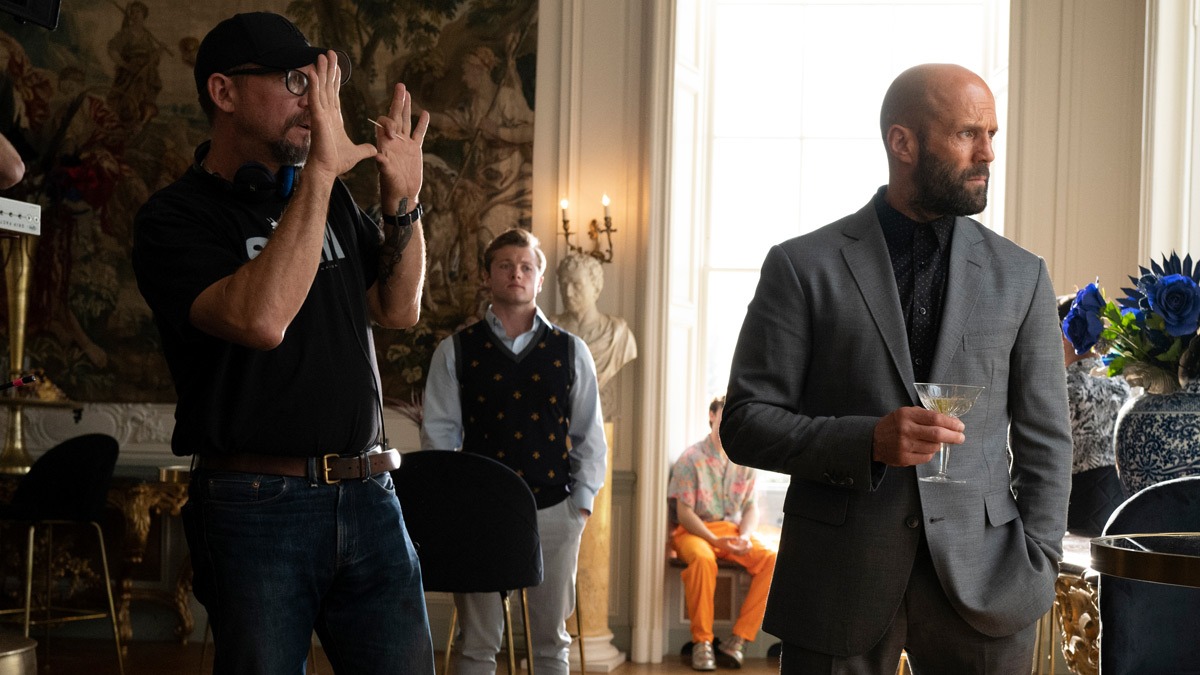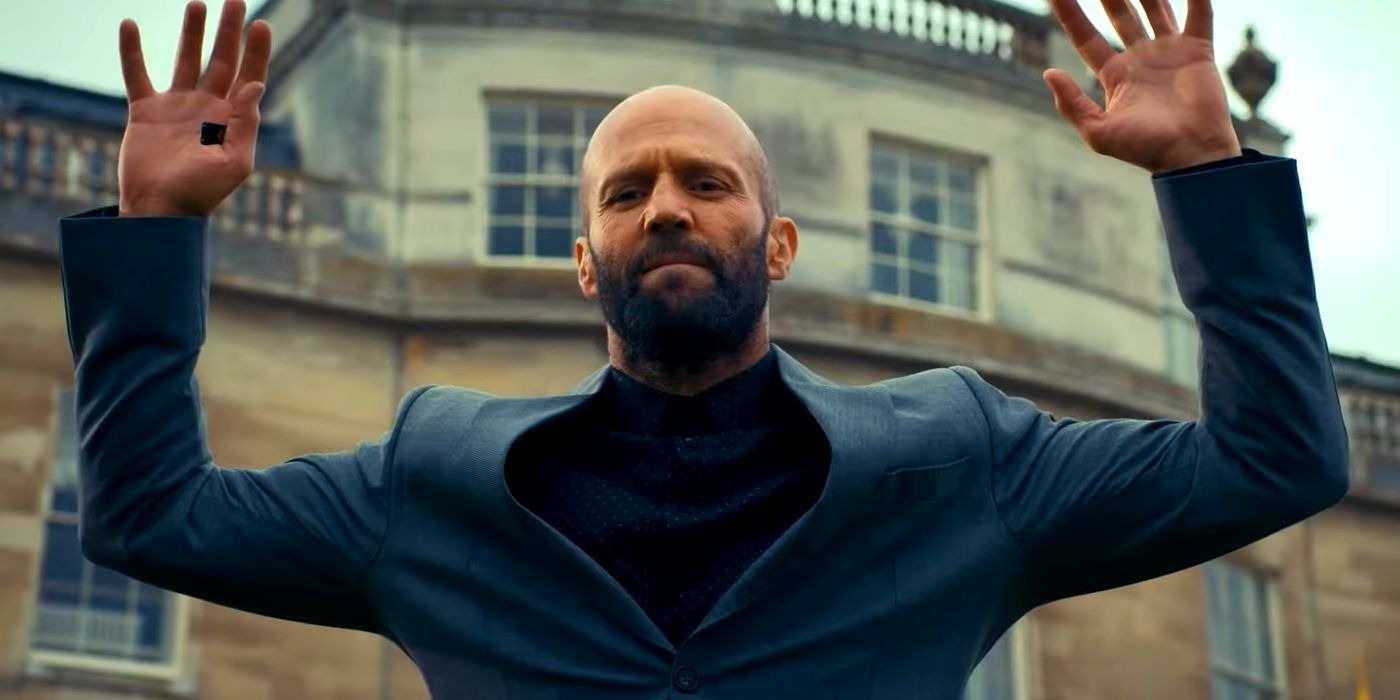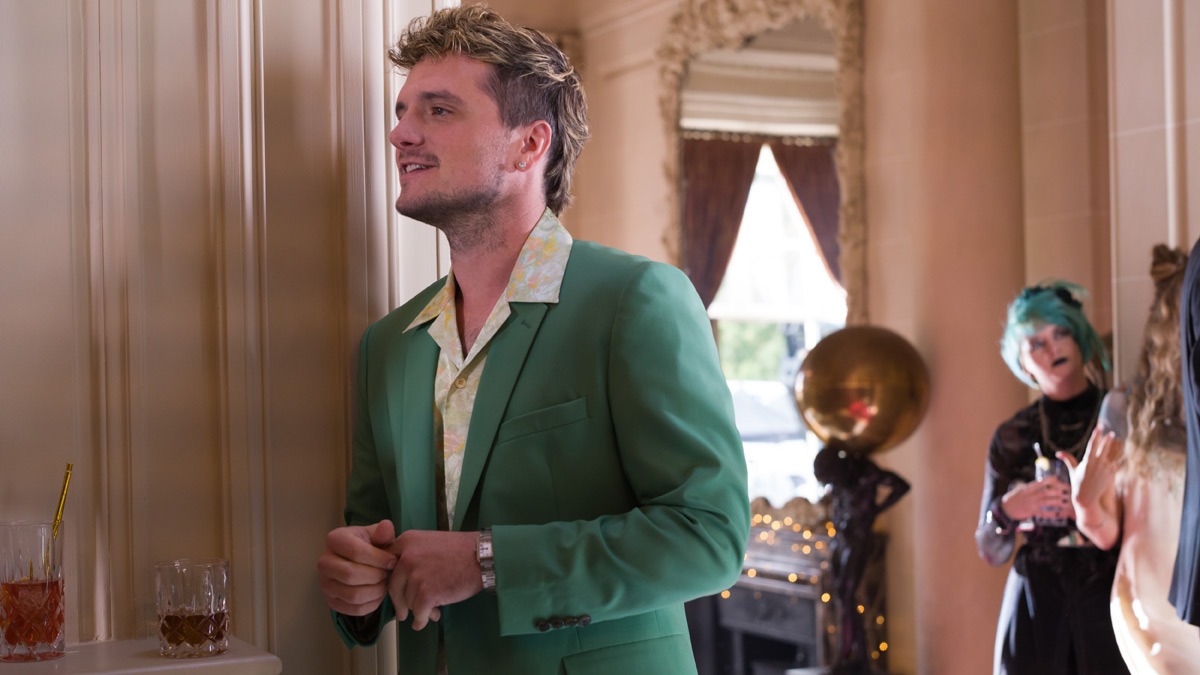Both The Beekeeper director David Ayer and star Josh Hutcherson agree with the idea that a Jason Statham movie is, in essence, a category of film unto itself. “When you go to see a Jason Statham movie, you expect to see things done that no other human could get away with,” is how Hutcherson puts it. “There’s something about his confidence and his acting and his physicality — you believe that he can pull this off. And so that is a bit of a subgenre, for sure.”
Ayer agrees, telling Consequence that “I’ve always been an incredible fan of his work. I love what he does. There’s something about him that’s really iconic and specific, that the audience connects with.”
In The Beekeeper, Statham plays Adam Clay, a retired elite operative living a quiet life tending beehives. Until, that is, his neighbor and friend Eloise (Phylicia Rashad) dies by suicide, following a brutal hacking of her finances that drains all of her accounts. Turns out, that hacking scheme is just the tip of a vast criminal conspiracy, overseen by the squirrely and ruthless Derek Danforth (Hutcherson), and Adam’s determined to bring it down with brute force.

Statham was already attached to star in The Beekeeper when Ayer received the script by Kurt Wimmer (Expend4bles, Equilibrium); while Ayer’s no stranger to action thanks to projects like End of Watch and 2016’s Suicide Squad, The Beekeeper being very much a Jason Statham movie was something, Ayer feels, that made it “really different from anything I’ve ever done.”
However, he adds, “I’ve always kind of wanted to do a more escapist, fun, pop action thing. [The Beekeeper] had all those elements, and then it had something you normally don’t see in these action movies, which is a really cool mythology about the beekeepers and beekeeping. It snapped in — like, I read the script and I could see it. I knew how to make that movie, and I wanted to make that movie.”
When asked what elements might define a Statham movie, Ayer’s first answer is immediate: “Jason punching people.” He says it with a laugh, but it’s not really a joke, because “there’s something about how he fights, how he looks on camera. There’s something about his presence that really enables people to project themselves into that character.”

Also, as Ayer continues, “The interesting thing I learned is how much the audience loves him. I’ve made a lot of movies with a lot of different actors, but the expectation of the audience and what they want from [Statham] and how they want to see him perform is really hardwired. I had to respect that. I had to learn how to respect that and amplify that.”
Amplifying Statham’s inherent Statham-ness, for Ayer, meant taking “everything he is and putting it in an elevated execution — to have him be a little bit more human, and find new ways of connecting him to the audience.” To do that, the director looked to the casting: “It’s like a basketball team — he’s absolutely the power center, so then it’s getting people around him that elevate his game: Minnie Driver, Jeremy Irons, Gemma Redgrave, Josh Hutcherson, Emmy Raver-Lampman — putting an amazing cast around him just elevates him even more.”
Not to mention Phylicia Rashad — beginning the film by establishing Adam’s relationship with her character was another way Ayer felt he could raise the bar. “That connection they have in the beginning — that warmth, that humanity — that’s what I felt has been missing a little bit from [Statham’s] world.” Plus, by making Statham “a little bit more human and accessible, it becomes that much more fun to go on the journey with him, when he starts punching people.”

Speaking of people who need punching, Hutcherson brings unprecedented, unbalanced menace to the villain role, which Ayer offered the Hunger Games star because “I really like playing people against type, and Josh is a really good actor and a really serious actor. So seeing what he’s capable of, having that as a starting point, and then breaking everything we think we know about him was a really fun exercise.”
Hutcherson says he was “shocked” to get the offer. “I mean, I thought they had the wrong guy,” he says, with a grin. “But for me as an actor, it’s just always very cool when a filmmaker who does really cool movies can see something in you that a lot of people haven’t. That’s always an actor’s dream, to not just be put in a box as, like, ‘the nice guy.’ And it was such a cool opportunity to play something so odd and out there and different. I had a few conversations with David about how we’re going to build Derek out, and then I bleached my hair and showed up and that was that.”
“He’s the bad guy and he’s a great villain, but he doesn’t know he is the bad guy,” says Ayer. “He’s just a broken, sad kid with a lot of problems — trying to find love, but doing a lot of damage to the world in the process.”
To be clear, while Hutcherson has always wanted to play darker characters, he says that “I never imagined that I’d be like going at it with Jason Statham as the bad guy.” However, he really enjoyed the experience, noting that “working with David was amazing. He has such a trained technical ability of where he wants to put the camera, and his vibe is not what I expected, honestly. I think I expected somebody who’s very loud and vibrant and big, and he’s very calm and restrained. He uses his words very carefully. And he’s very like a quiet, strong leader, which was a great vibe for this shoot where it’s absolute chaos.”

As Hutcherson continues, “The thing I love about David the most is his openness to collaborate and let the actors explore. With a character like Derek, there were a lot of different directions that we could have taken it, and the conversations we had gave me a great base to work from. But then on the day, on set, he would give me wild directions and say like, ‘Let’s take it all the way to level 100 — you’re on an absolute bender, you haven’t slept in three days, and you just want your mom to give you a hug.’ And then, flip it the other way. I had a lot of fun with him in that regard.”
Ayer’s experience in the Statham-verse, he says, taught him how “to tackle a true genre picture and stay within the lines of the genre picture and respect that — it’s a muscle I learned I have, and it’s a muscle I want to develop. I think there’s a huge appetite for old school, fun, escapist movies, where we can leave our troubles and the world’s troubles behind for a moment. Which is what movies have always been about. So I want to continue doing that in the future.”